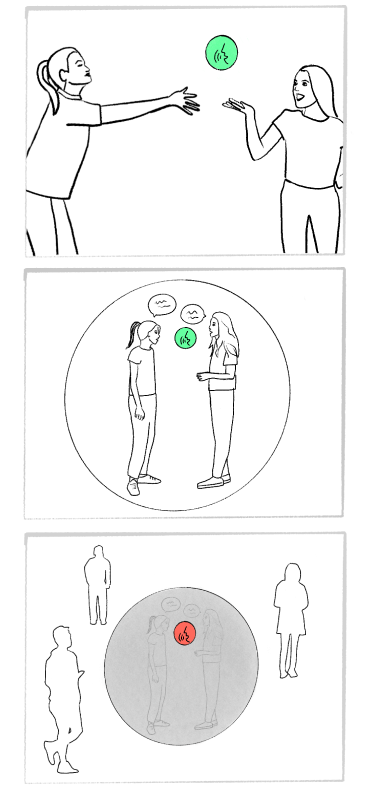How might we...
...balance a university’s duty of care around safety with the expectations that students can speak and interact freely?
This pattern is a co-created output a Design Jam which took place in Singapore on the subject of Data Transparency and Control in the Metaverse. During the Design Jam, six design teams created simple prototypes which helped deliver better transparency and control over data use in fictional services.
Smobler is a creative agency that develops metaverse worlds and experiences for businesses to engage their clients, including Aventis Metaverse, the world’s first graduate school in the metaverse.
In the fourth season of the Singapore Accelerator, an ongoing research collaboration between the TTC Labs team at Meta and the Singapore Infocomm Media Development Authority (IMDA) and Personal Data Protection Commission (PDPC), Smobler focused on social signaling within metaverse environments, particularly in institutional settings such as universities, where conversations between people range from public to completely private.
Smobler’s prototype addressed the concerns of students around the privacy of their conversations while using the metaverse university social hub. This included addressing the ‘hidden camera effect’ in which people suspect everything they say and do in XR spaces is subject to capture and processing.
How might we...
...balance a university’s duty of care around safety with the expectations that students can speak and interact freely?
Immersive XR spaces lack the myriad of subtle social cues and signals that provide context in the ‘real world’ as to how to behave and act in different social contexts. In their prototype, Smobler explored how XR products could be designed to enable people to provide explicit social signals and set social contexts.
Bubble Wand
To initiate a conversation, someone can select their desired level of privacy and send out a request to other people by blowing a bubble with a bubble wand. To accept the conversation request, the recipient must touch the bubble (or burst it to decline the request), creating a larger ‘privacy bubble’ that encloses both parties. This creates a strong visual metaphor and embodied mode of interaction that is intuitive and easily understood.
Privacy Bubble
When initiating a conversation, users have the ability to create ‘privacy bubbles’, a 3D bubble they can step into that indicates the level of privacy of a conversation. The privacy level is indicated with color and includes open conversations, semi-open (only certain users and the platform can listen) and closed (only specified users can listen). This acts as an explicit signal to other users and the platform as to the privacy wishes of the user.

In the Design Jams, Smobler utilized a range of XR prototyping techniques, including sketches, storyboards and props to demonstrate their concept in an immersive and engaging way. The resulting prototype, along with those produced by the other participating companies, were later synthesized to extrapolate a series of privacy UX design patterns.
The Sound Bubble pattern was developed based on insights derived from Smobler’s prototype.
The Sound Bubble design pattern provides an adjustable, color-coded boundary that allows people to set the privacy level of their conversation within the context of a public space. When initiating a conversation, people can choose the privacy level before extending an invitation to others. At any point in the conversation, people can update the privacy settings, providing them with ongoing control over their privacy, creating peace of mind while talking to others in immersive spaces.